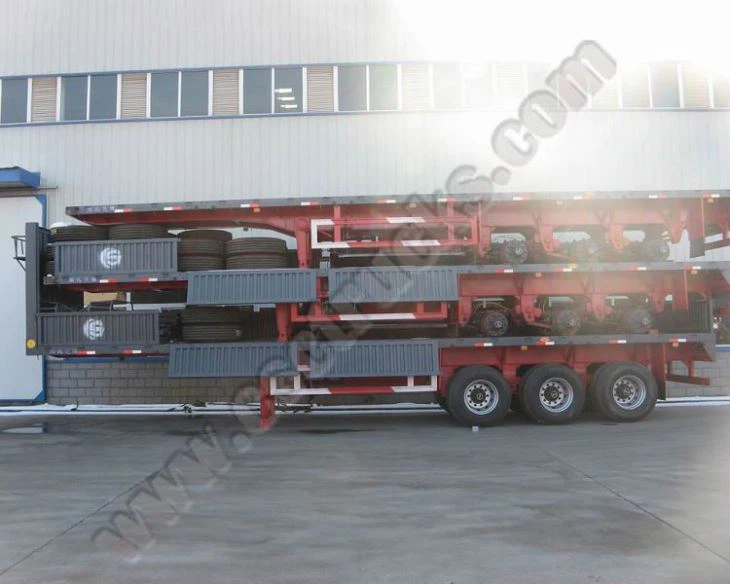Understanding Dump Truck Capacity: Measuring in Tons

Introduction
When it comes to construction, landscaping, and other heavy-duty industries, dump trucks are indispensable. They serve as the backbone for transporting materials like gravel, sand, dirt, and more. A crucial aspect that operators, contractors, and companies must consider is the dump truck capacity, specifically how it’s measured in tons. Understanding dump truck capacity not only helps in budgeting and planning but also ensures the efficient and safe transport of materials. In this comprehensive guide, we will explore various aspects of dump truck capacity measured in tons, providing practical insights, real-world examples, and useful tips.
What is a Dump Truck?
A dump truck, also known as a dumper truck or tipper truck, is designed to transport loose materials such as sand, gravel, or dirt. Its key feature is a hydraulically operated bed that tilts to unload its contents easily. Various types of dump trucks are used in the industry, each suited for specific jobs and capacities.
Types of Dump Trucks
- Standard Dump Truck: A traditional design with a standard dump body, best for smaller construction jobs.
- Articulated Dump Truck: Features a hinge between the cab and the dump box, providing better maneuverability.
- Transfer Dump Truck: Consists of a standard dump truck and a trailer used for transporting more materials.
- Side Dump Truck: Designed to dump materials from the side, ideal for narrow areas.
- Tri-Axle Dump Truck: Equipped with three axles for better load distribution and capacity.
Measuring Capacity in Tons
Dump truck capacity is typically measured in tons, referring to the amount of material it can carry safely. However, the exact tonnage can vary based on the type of material and the truck’s design. Understanding this measurement is vital for optimizing transport efficiency.
Understanding Tonnage
Tonnage can be understood in two primary ways: payload capacity and volumetric capacity. Payload capacity refers to the maximum weight the truck can handle, while volumetric capacity indicates how much space is available for materials.
Payload Capacity vs. Volumetric Capacity
| Type | Description | Measurement |
|---|---|---|
| Payload Capacity | Maximum weight of the load the truck can carry. | Measured in tons. |
| Volumetric Capacity | Amount of space available for materials. | Measured in cubic yards or cubic feet. |
Calculating Dump Truck Capacity in Tons
Calculating the capacity of a dump truck involves understanding its specific model, configuration, and the material density. Here’s a step-by-step approach to calculating dump truck capacity in tons:
1. Determine the Truck’s Specifications
Check the specifications from the manufacturer. Most dump trucks will have a stated payload capacity. For example, a standard dump truck generally has a capacity between 10 to 14 tons.
2. Consider the Material Density
Different materials weigh different amounts, which affects how many tons the truck can transport. For instance, a cubic yard of sand weighs about 1.5 tons, while the same volume of gravel might weigh closer to 1.4 tons.
3. Use the Formula
The general formula to calculate the truck’s capacity is:
Capacity in Tons = (Volume in Cubic Yards x Material Weight in Tons per Cubic Yard)
Practical Example
If a dump truck has a volumetric capacity of 12 cubic yards and you are transporting sand, using the density of sand (1.5 tons per cubic yard), the capacity in tons would be:
Capacity = 12 cubic yards x 1.5 tons/cubic yard = 18 tons
Common Dump Truck Capacities
Dump truck capacities vary significantly based on design and purpose. Here is a breakdown of typical dump truck capacities:
| Type of Dump Truck | Typical Capacity (in Tons) | Use Case |
|---|---|---|
| Standard Dump Truck | 10-14 | Small construction projects |
| Tri-Axle Dump Truck | 15-20 | Medium to large construction sites |
| Articulated Dump Truck | 20-40 | Agricultural dispersal and rough terrains |
| Transfer Dump Truck | 20-25 | Operations requiring multiple trips |
| Side Dump Truck | 12-16 | Narrow job sites where tight maneuvering is needed |
Factors Affecting Dump Truck Capacity
While the specific truck model and material density are crucial for capacity calculations, several factors can also greatly influence the actual capacity a truck can handle:
1. Truck Configuration
The number of axles, bed height, and overall design can influence the capacity. More axles typically lead to a higher carrying capacity due to better weight distribution.
2. Material Type
The type of material being transported affects how much can be loaded. Heavier materials like dirt may lower the total weight transported because of weight limits.
3. Legal Weight Limits
Local and state regulations often impose weight limits on roadways which can constrain the actual load a dump truck can transport, regardless of its possible capacity.
4. Load Distribution
Unevenly distributed loads can affect traction and stability, potentially putting truck and operator safety at risk.
Tips for Maximizing Dump Truck Capacity

To optimize the use of dump trucks in your operations, consider the following tips:
1. Know Your Material
Understanding the density and characteristics of the materials being transported can help in planning capacity better.
2. Regular Maintenance
Keep your dump truck well-maintained. A well-functioning hydraulic system will ensure the bed is functioning properly, maximizing effective loading and unloading.
3. Ensure Proper Loading Techniques
Use proper loading techniques to avoid overloading or uneven loads. This will ensure safer operations and maximize capacity.
4. Check Local Regulations
Always be aware of local weight restrictions and regulations to avoid penalties.
Dump Truck Operating Costs
Understanding the cost implications of using dump trucks is crucial for budgeting and financial planning:
1. Fuel Efficiency
Fuel consumption rates can vary widely based on the truck’s load, terrain, and driving habits.

2. Maintenance Costs
Regular maintenance is essential. Keeping up with maintenance schedules can prevent costly repairs.
3. Insurance and Liability
Insurance coverage will vary depending on the size and type of dump truck, as well as its operational use.
4. Depreciation
Consider the depreciation of the vehicle which affects overall cost calculations over time.
Frequently Asked Questions (FAQs)
1. What is the average dump truck capacity?

The average capacity for a standard dump truck is typically between 10 to 14 tons.
2. How do I calculate the capacity of my dump truck?
To calculate capacity, consider both the volume in cubic yards and the weight of the material per cubic yard, using the formula: Capacity in Tons = (Volume in Cubic Yards x Material Weight in Tons per Cubic Yard).
3. Can dump trucks carry hazardous materials?
Yes, but there are strict regulations and practices that must be followed for the safe transport of hazardous materials.
4. What factors influence the capacity of a dump truck?
Factors include truck configuration, type of material, legal weight limits, and load distribution.
5. Is it possible to overload a dump truck?
Yes, overloading a dump truck can be dangerous and lead to penalties, accidents, or truck damage. Always adhere to the manufacturer’s specifications and local regulations.
6. How often should dump trucks be maintained?
Dump trucks should be inspected regularly, with maintenance performed according to the manufacturer’s recommendations, usually every 5,000 to 10,000 miles or as needed.
